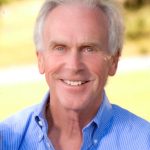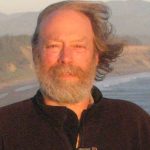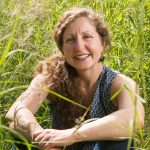 Contact: Dr. Dominick DellaSala (Dominick@geosinstitute.org; 541-621-7223)
Contact: Dr. Dominick DellaSala (Dominick@geosinstitute.org; 541-621-7223)
Ashland, Oregon – over two hundred of the nation’s top conservation and natural resource scientists called on the Forest Service to suspend its efforts to rollback popular roadless area protections on over 9 million-acres of the nation’s most intact temperate rainforest in Alaska.
Considered the crown jewel of the national forest system, the 16.8 million-acre Tongass National Forest in southeast Alaska contains thousands of near shore islands, spectacular glaciated mountains, and towering spruce-hemlock forests. Roadless areas (>5,000-acre areas lacking development) are the ecological foundation to some of the world’s most prolific salmon runs that support fish-eating bears, eagles, and wolves along with a vibrant outdoor and recreation economy that supports far more jobs and generates more money for local communities than the region’s extraction industries. Tongass old-growth forests, which the Forest Service intends to log, store more carbon than any forest in the nation, which is key to Alaska’s ability to prepare for unprecedented climate change already well underway.
According to Dominick A. DellaSala, Chief Scientist, Geos Institute in Ashland, Oregon, and editor/author of Temperate and Boreal Forests of the World: Ecology and Conservation, “Forest Service would best serve the public by shifting timber supply to young forests where a wall-of-wood will soon be ready to support the timber industry, instead of a wall-of-opposition from the public concerned about the fate of rainforests.”
The Roadless Conservation Rule (2001) protects over 50 million acres of the nation’s last intact landscapes. At the time, over 1 million Americans provided comments in support of this landmark conservation achievement, including hundreds of scientists that wanted Tongass roadless areas to have national protections. The Tongass is unique in containing over 9 million roadless acres, which is over half this national forest and ~19% of the national total.
Retired Alaskan wildlife biologist, Matt Kirchhoff, noted “ancient cedars will be cut down and exported to the Far East, and ironically, the US Taxpayer will pay for it. It’s time to stop the madness. Protect the still intact roadless areas in America’s only temperate rainforest.”
Retired Alaskan wildlife ecologist and co-editor/author of North Pacific Temperate Rainforests, John Schoen added “the consensus of scientists, including two former Forest Service Chiefs (Mike Dombeck, Jack Ward Thomas) is the nation’s remaining old growth should be protected from developments. Excluding the Tongass from the national roadless protections will have an irreversible consequence to the vibrant fish and wildlife populations that depend on these areas in America’s largest national forest.”
The Forest Service is taking public comments, which closes October 15, and has a website with details on the Alaska proposal.
Media Coverage

 At the world’s first breeding centre in Langley, B.C., spotted owls are hatched in incubators, given around the clock medical care and hand fed euthanized rodents in a last-ditch effort to save the species from Canadian extinction. All the while scientists warn that the province has yet to recognize the endangered raptor as a symbol of our escalating failure to protect old-growth forests. Read the entire in-dept piece by Sarah Cox at
At the world’s first breeding centre in Langley, B.C., spotted owls are hatched in incubators, given around the clock medical care and hand fed euthanized rodents in a last-ditch effort to save the species from Canadian extinction. All the while scientists warn that the province has yet to recognize the endangered raptor as a symbol of our escalating failure to protect old-growth forests. Read the entire in-dept piece by Sarah Cox at 
 Contact: Dr. Dominick DellaSala (
Contact: Dr. Dominick DellaSala ( Arsum is the Senior Adaptation and Coastal Resilience Specialist for the National Wildlife Federation’s Southcentral Region. In this role, she advances climate adaptation efforts, with a focus on nature-based approaches to address the impacts of climate change and extreme events across the Gulf region. She has authored and co-authored numerous publications on climate impact assessments and adaptation solutions. Additionally, she regularly participates in state-based coastal resilience and hazard mitigation planning across the Gulf, collaborating with regional and local stakeholders.
Arsum is the Senior Adaptation and Coastal Resilience Specialist for the National Wildlife Federation’s Southcentral Region. In this role, she advances climate adaptation efforts, with a focus on nature-based approaches to address the impacts of climate change and extreme events across the Gulf region. She has authored and co-authored numerous publications on climate impact assessments and adaptation solutions. Additionally, she regularly participates in state-based coastal resilience and hazard mitigation planning across the Gulf, collaborating with regional and local stakeholders. Frank is the former President of the Reinsurance Association of America. Frank currently serves on the Advisory Board of the OECD’s International Network for the Financial Management of Large-Scale Disasters, the RAND Center on Catastrophic Risk Management and Compensation, and the University of Cincinnati’s Carl H. Lindner III Center for Insurance and Risk Management Advisory Board.
Frank is the former President of the Reinsurance Association of America. Frank currently serves on the Advisory Board of the OECD’s International Network for the Financial Management of Large-Scale Disasters, the RAND Center on Catastrophic Risk Management and Compensation, and the University of Cincinnati’s Carl H. Lindner III Center for Insurance and Risk Management Advisory Board. Jim is a multilingual world traveler. Based in Bavaria during the 1970s, Jim spent most of this period in India, Afghanistan and Nepal, where he founded and operated a charitable medical clinic serving Tibetan Refugees. He settled in Oregon in 1983 on a forested ranch in the Umpqua National Forest.
Jim is a multilingual world traveler. Based in Bavaria during the 1970s, Jim spent most of this period in India, Afghanistan and Nepal, where he founded and operated a charitable medical clinic serving Tibetan Refugees. He settled in Oregon in 1983 on a forested ranch in the Umpqua National Forest. Dr. Micah Hahn is an Associate Professor of Environmental Health in the Institute for Circumpolar Health Studies at the University of Alaska-Anchorage. She received her joint PhD in Epidemiology / Environment and Resources from the University of Wisconsin-Madison and her MPH in Global Environmental Health from Emory University. Subsequently, she was a postdoctoral fellow for the CDC Climate and Health Program, and in this position worked collaboratively with the CDC Division of Vector-borne Diseases and the National Center for Atmospheric Research. Her research focuses on understanding the health impacts of climate change and working with communities to develop locally-relevant adaptation and resilience-building strategies. Dr. Hahn is also on the Management Team of the Alaska Climate Adaptation Science Center.
Dr. Micah Hahn is an Associate Professor of Environmental Health in the Institute for Circumpolar Health Studies at the University of Alaska-Anchorage. She received her joint PhD in Epidemiology / Environment and Resources from the University of Wisconsin-Madison and her MPH in Global Environmental Health from Emory University. Subsequently, she was a postdoctoral fellow for the CDC Climate and Health Program, and in this position worked collaboratively with the CDC Division of Vector-borne Diseases and the National Center for Atmospheric Research. Her research focuses on understanding the health impacts of climate change and working with communities to develop locally-relevant adaptation and resilience-building strategies. Dr. Hahn is also on the Management Team of the Alaska Climate Adaptation Science Center. Michael is a former Founding Principal of Resilient Cities Catalyst, a global non-profit helping cities and their partners tackle their toughest challenges. He is currently the Executive Director of Climate Resilience Academy at the University of Miami.
Michael is a former Founding Principal of Resilient Cities Catalyst, a global non-profit helping cities and their partners tackle their toughest challenges. He is currently the Executive Director of Climate Resilience Academy at the University of Miami. Dr. Quintus Jett is a consultant, educator, and strategist for public causes. He has a doctorate in Organizations & Management from Stanford University, and a two-decade faculty career which spans schools, departments, and programs of business, engineering, liberal studies, divinity, and public and nonprofit management. Following Hurricane Katrina in 2005, Dr. Jett launched a volunteer project in New Orleans, which enlisted residents, students from over a dozen colleges and universities, and hundreds of others to field map the city’s Gentilly district, Lower Ninth Ward, and New Orleans East. Dr. Jett is an innovator in higher education, bridging the divide between academic research and the other priorities of the modern university, including student access and diversity, community engagement, and providing foundations for life-long learning in today’s rapidly changing world.
Dr. Quintus Jett is a consultant, educator, and strategist for public causes. He has a doctorate in Organizations & Management from Stanford University, and a two-decade faculty career which spans schools, departments, and programs of business, engineering, liberal studies, divinity, and public and nonprofit management. Following Hurricane Katrina in 2005, Dr. Jett launched a volunteer project in New Orleans, which enlisted residents, students from over a dozen colleges and universities, and hundreds of others to field map the city’s Gentilly district, Lower Ninth Ward, and New Orleans East. Dr. Jett is an innovator in higher education, bridging the divide between academic research and the other priorities of the modern university, including student access and diversity, community engagement, and providing foundations for life-long learning in today’s rapidly changing world. Scott is Monfort Professor of Atmospheric Science at Colorado State University. He has written about 100 publications in the peer-reviewed climate literature, is a former editor of the Journal of Climate, and served for five years as founding Science Chair of the North American Carbon Program.
Scott is Monfort Professor of Atmospheric Science at Colorado State University. He has written about 100 publications in the peer-reviewed climate literature, is a former editor of the Journal of Climate, and served for five years as founding Science Chair of the North American Carbon Program. Linda has many years of experience in disaster preparedness and resilience. She has been an elected official on the Linn County Iowa Board of Supervisors, Chair of the Metropolitan Planning Organization, the East Central Iowa Council of Governments, the statewide Mental Health Developmental Disability and the Linn County Board of Health. Langston is a former president of the National Association of Counties (2013-2014).
Linda has many years of experience in disaster preparedness and resilience. She has been an elected official on the Linn County Iowa Board of Supervisors, Chair of the Metropolitan Planning Organization, the East Central Iowa Council of Governments, the statewide Mental Health Developmental Disability and the Linn County Board of Health. Langston is a former president of the National Association of Counties (2013-2014). Ken works with families and organizations as a mediator, organizational consultant, trainer and facilitator. Along with his passion for helping people prepare for and reduce climate change, Ken also volunteers as a mediator through Mediation Works and is passionate about supporting youth through mentoring with Boys to Men of Southern Oregon.
Ken works with families and organizations as a mediator, organizational consultant, trainer and facilitator. Along with his passion for helping people prepare for and reduce climate change, Ken also volunteers as a mediator through Mediation Works and is passionate about supporting youth through mentoring with Boys to Men of Southern Oregon. Matthew is a retired high school teacher who was once honored as Oregon High School Social Studies Teacher of the Year. Before his teaching career he was in the restaurant business in Portland. He is also a lawyer who has been a member of the Oregon State Bar Association since 1980.
Matthew is a retired high school teacher who was once honored as Oregon High School Social Studies Teacher of the Year. Before his teaching career he was in the restaurant business in Portland. He is also a lawyer who has been a member of the Oregon State Bar Association since 1980. Andrea is the Resilience Policy Advisor for the North Carolina Office of Recovery and Resiliency. She works across state agencies and with local governments to increase the state’s resilience to the impacts of climate change.
Andrea is the Resilience Policy Advisor for the North Carolina Office of Recovery and Resiliency. She works across state agencies and with local governments to increase the state’s resilience to the impacts of climate change.